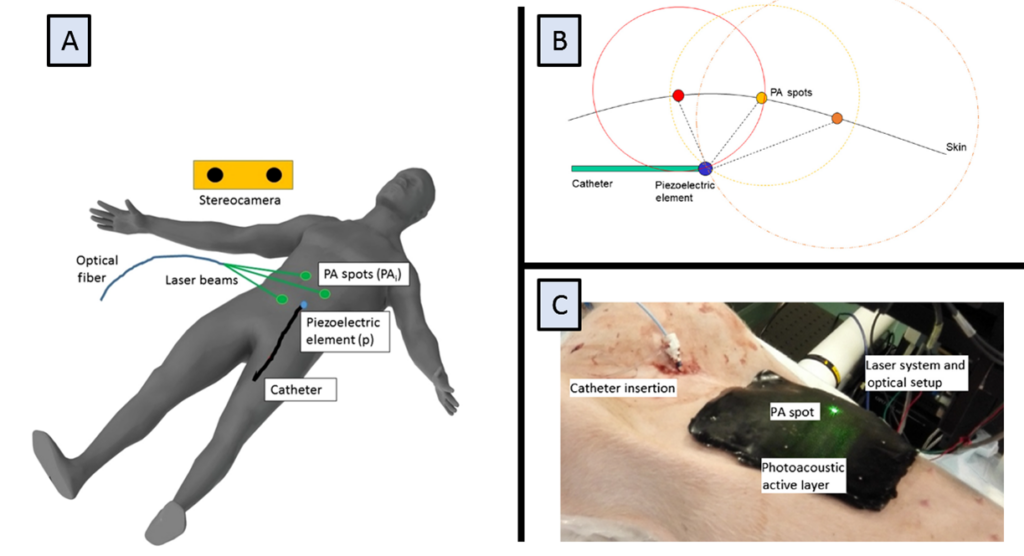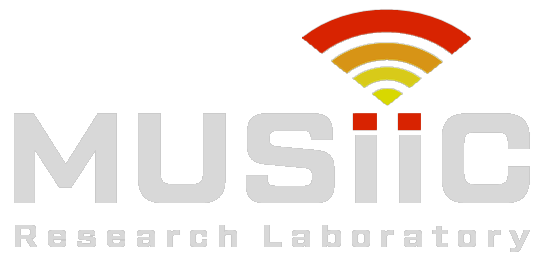Needles, guidewires, and catheters represent some of the most used daily instruments by interventional radiologists. Catheters are commonly tracked with either an imaging modality such as X-ray fluoroscopy or a tracking system such as electromagnetic (EM) trackers. X-ray delivers a radiation dosage to the patient for a non-therapeutic purpose; and an EM tracker places certain restrictions on the types of tools that can be used without interfering with tracking accuracy. We have developed a novel catheter tracking technology that makes use of PA imaging and more specifically, the PA effect. Figure 1A shows the overall concept of our iPASS tracking technology. We leverage the use of photoacoustic markers, denoted as PAi. A stereo camera (SC) is used to observe these markers optically. These markers are non-physical entities generated on the surface of a medium. A piezoelectric element is also attached to the catheter tip, denoted as p, and acts as an acoustic sensor. The signal received by the PZT element for each marker will correspond to a distance measure between the marker and the PZT element itself. If there are more than three well-structured photoacoustic markers, the catheter tips location with respect to the stereo camera system can be computed (Figure 1B). We have validated this tracking system in in vivo pig experiments using variations of PA spots distribution and configurations (Figure 1C). We hypothesize that a catheter tracking method using photoacoustics would increase the attractiveness of photoacoustic systems by providing them with the means to be an imaging and general tool tracking solution.

Publications
- Cheng A, Kang JU, Taylor RH, Boctor EM. Direct Three-dimensional Ultrasound-to-video Registration using Photoacoustic Markers. Journal of Biomedical Optics 18 (6): 066013.
- Cheng A, Kim Y, Itsarachaiyot Y, Zhang HK, Weiss CR, Taylor RH, Boctor EM. Photoacoustic-based catheter tracking: simulation, phantom, and in vivo studies. J Med Imaging (Bellingham) 2018 Apr;5(2):021223.
